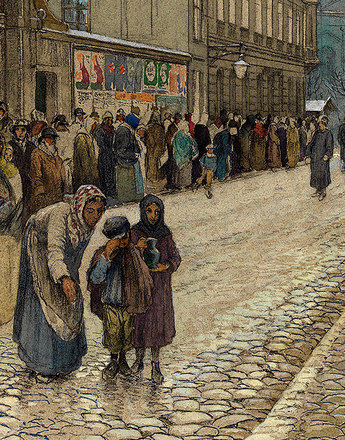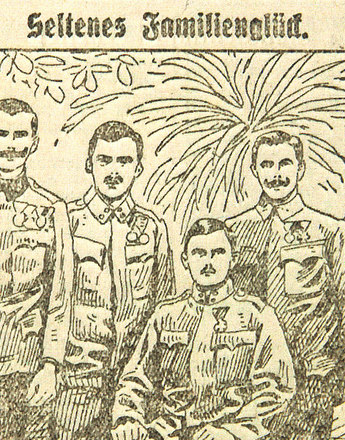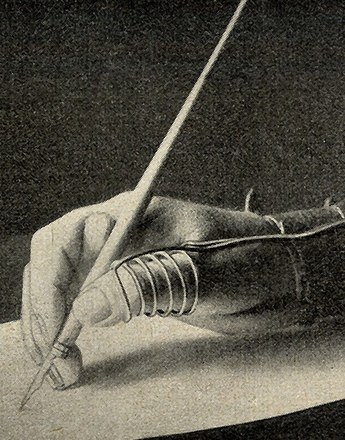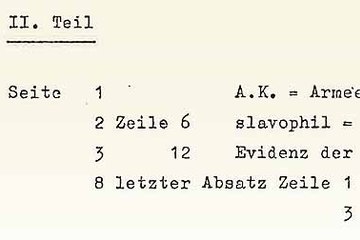Directly after the end of the war, the invalids began to organise themselves into societies and associations. One of their leading supporters was the Central Association, which also represented war widows, thus demonstrating the civilian character of the Austrian invalid movement.
As long as the Habsburg Monarchy existed it was difficult for war invalids to set up their own associations. Firstly, the wounded soldiers were still under the command of the military authorities even while in hospital, secondly the authorities registered their principle suspicion of all endeavours to form organisations. This changed abruptly with the end of the war.
11 November 1918, the day before the proclamation of the Republik Deutschösterreich, the Republic of German Austria, was that of the foundation assembly of the Zentralverband der deutschösterreichischen Kriegsbeschädigten (Central Association of German-Austrian War Invalids), which within a few weeks was to grow into a powerful lobby. The first members of the Association were the war invalids accommodated in the Viennese hospitals. Other affected persons – also in rural districts – soon followed. In early 1919, the Association began to canvas additionally for members among war widows. Hence an organisation evolved in Austria that represented all war victims, not just war invalids, and that was linked not so much to the jointly experienced military past as to the war invalids of other countries, most of which accepted healthy war veterans as members as well. The Austrian Central Association saw itself as non-partisan, but was closely identified with social democracy and showed a strong pacifist orientation.
It was valued in the first post-war year as a consulting partner for the social department headed by the Social Democrat minister Ferdinand Hanusch, thus the Association succeeded in asserting itself in many of its demands. It was aided here by the state’s fear of revolutionary trends. Accordingly, the Association availed on the one hand of a lever in negotiations, but on the other was actually responsible that Communist associations did not exercise any influence worthy of mention among war victims. Its organisation in the weeks immediately after the war was an impressive demonstration of successful self-empowerment: the Habsburg Monarchy had collapsed, the duty to obey and the war were at an end. The former soldiers who had returned home injured by the war now took their fate into their own hands and, with self-assurance and by implementing their symbolic capital in specific actions, demanded adequate support from the state.
The Invalidenentschädigungsgesetz (Invalid Compensation Act) is an expression of their successful struggle. It was not only the first modern pension law of this nature in Europe, but for the first time it also guaranteed war invalids a voice in many issues. Nevertheless, many enraged protests, struggles and conflicts, occupations and demonstrations were to follow as war invalids fought for public and state awareness in the years between the wars. For many years the Central Association, sometimes uniting up to 90 % of all war invalids in its ranks, became an integral power factor in the political life of Austria.
Translation: Abigail Prohaska
Diehl, James M.: The Organization of German Veterans 1917–1919, in: Archiv für Sozialgeschichte, 11 (1971), 139-184
Pawlowsky, Verena/Wendelin, Harald: Mobilisierung der Immobilen – Die Kriegsbeschädigten des Ersten Weltkriegs organisieren sich, in: Österreichische Zeitschrift für Geschichtswissenschaften, 22 (2011), 1: Politisch Reisen, hg. v. Gehmacher, Johanna/Harvey, Elizabeth, 185-198
-
Chapters
- Invalid pensions, allowances for wounded veterans, state support and maintenance contributions
- The failure of private welfare
- The hospitals
- From recovery to reintegration: the training of invalids
- Work for war invalids
- Heroes or victims? War invalids and their impact on general awareness
- Forms of war injury
- Discontent and misery: war invalids get organised












